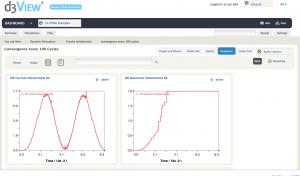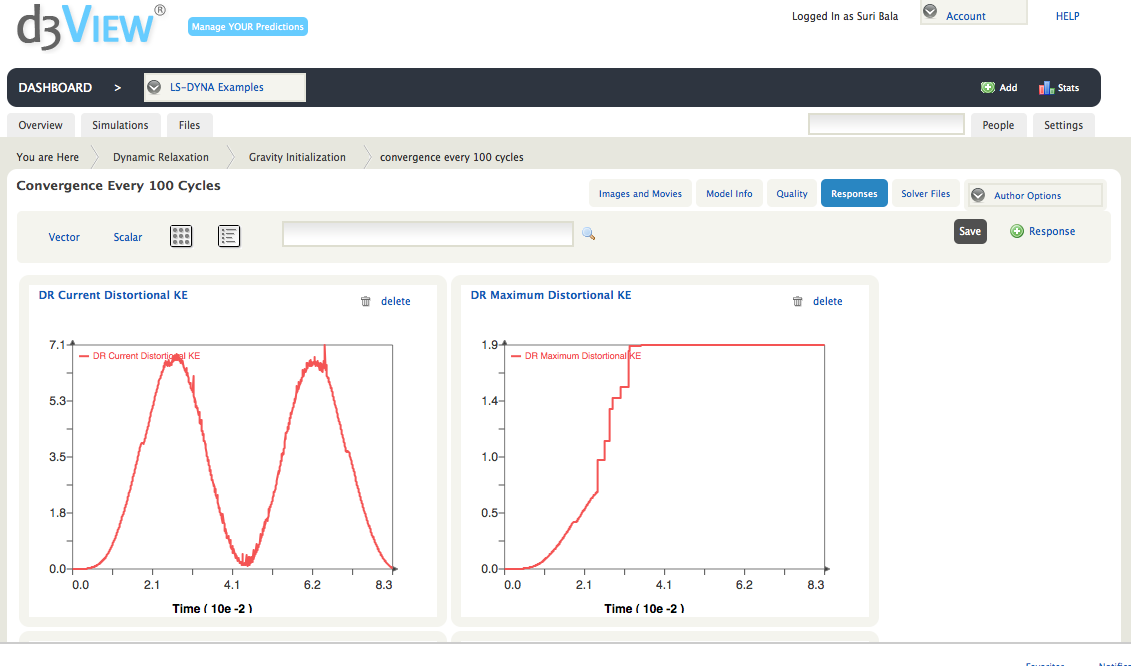Understanding the rate of convergence when employing Explicit Dynamic Relaxation can be very useful to track model sensitivity and to solve convergence problems. d3VIEW now has support to auto-extract the convergence information after a simulation is completed. It also processes DR graphics data to identify points of divergence.
Attached is a snapshot from a recent simulation that was used to study the number of cycles used to check for convergence in the event of a gravity initialization of a rigid sphere on a foam block. This study showed that if we have a higher number of cycles to check for convergence, then it is possible that we completely miss the convergence point and the problem could continue to oscillate about a median point. In a test problem of Gravity Initialization using Explicit DR, depending on using 100 or 1000 cycles between convergence checking, the sphere in the case of 1000 cycles actually converged on its rebound of the surface of the foam.
















